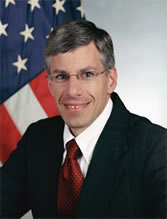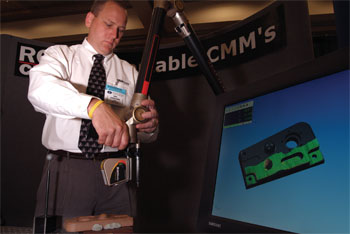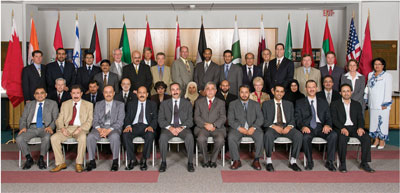 Regional Differences in Hospital Quality Regional Differences in Hospital Quality
A new study shows sharp regional strengths and weaknesses in the quality of patient care at U.S. hospitals.
The study was performed by Ashish Jha, assistant professor of health policy and management at the Harvard School of Public Health, and colleagues from Brigham and Women's Hospital and the Boston Veterans Affairs Healthcare System. They used data from the Hospital Quality Alliance for 3,558 hospitals to examine 10 quality indicators for three important medical conditions: acute myocardial infarction, congestive heart failure (CHF) and pneumonia.
The researchers found tremendous regional variation in quality of care. Boston-area hospitals provided the best care in the nation for patients with heart attacks or CHF, but did not do as well in pneumonia. Nonprofits outperformed for-profit hospitals, and hospitals in the Northeast and Midwest scored higher than those in the West and South.
"This is the first step in assessing the quality of care in hospitals across the country," says Jha. "Hospitals scoring high for one medical condition did not necessarily score high in the other conditions. Therefore, we will need to collect more information on a wider range of medical conditions to help us get a better picture of hospital performance. Our results indicate that we will need to focus our attention on quality improvement efforts in a large number of hospitals across the country."
The effort to study U.S. hospital quality is new. The Hospital Quality Alliance was formed by a partnership between the Centers for Medicare and Medicaid Services, the Joint Commission on Accreditation of Healthcare Organizations and the American Association for Retired Persons in an effort to gather and examine quality performance data.
For more information, visit www.hsph.harvard.edu.
New Director for NIST
 The U.S. Senate re cently confirmed a veteran manager of science and technology development as the 13th director of the National Institute of Standards and Technology. The U.S. Senate re cently confirmed a veteran manager of science and technology development as the 13th director of the National Institute of Standards and Technology.
William Alan Jeffrey, 45, was nominated by President Bush in May to succeed Arden Bement, who was appointed director of the National Science Foundation. Jeffrey has a long history with government science and technology policies. He's served as a senior director for homeland security and as the assistant director for space and aeronautics at the Office of Science and Technology Policy, which is part of the president's executive office. Prior to that, he was the deputy director for the Advanced Technology Office and chief scientist for the Tactical Technology Office with the Defense Advanced Research Projects Agency. There, he developed research programs in communications, computer network security, novel sensor development and space operations.
For more, visit www.nist.gov.
Internal Marketing = Success
 CEOs that prioritize energizing employees reap profits and success. CEOs that prioritize energizing employees reap profits and success.
That's according to a recently released book, Light Their Fire: Using Internal Marketing to Ignite Employee Performance and WOW Your Customers (Susan M. Drake, Michelle J. Gulman and Sara M. Roberts, Dearborn Trade Publishing, 2005). The book asserts that internal marketing should be the responsibility of top management. Often, executives assign employee motivation to human resource departments, which post bland mission statements and company newsletters in employee break rooms to improve morale. They might as well not bother, say the authors.
"It's all about getting employees to love your brand so they, in turn, will convince customers to love it," says Drake. "Employees who are ho-hum about your brand and product will do a ho-hum job and give ho-hum service. Ho-hum service equals lost business."
The book includes suggestions for combining communication tools for maximum effectiveness, methods for measuring the effectiveness of your messages and tips for getting more out of orientation programs. It points to successful motivation techniques by Homewood Suites and Disney as models for other companies. Homewood Suites' "Driving Literacy Home" campaign that encouraged employees to donate books to children and Disney's consistent branding at its parks are both good examples of employee motivation.
Other successful techniques include:
• Train employees who are engaged, enabled and empowered
• Inspire them with a good logo
• Start branding on employees' first day on the job
• Make employees feel like owners
• Connect employees to the community
"The sum of all the benefits of internal marketing is something that is less tangible, but possibly of greater value than anything else a company can aspire to be a great brand," say the authors.
Metrology Conference Focuses on 3-D
 The 2005 Coordinate Metrology Systems Conference logged record attendance figures and earned raves from attendees about the show's 3-D metrology-only focus. The 2005 Coordinate Metrology Systems Conference logged record attendance figures and earned raves from attendees about the show's 3-D metrology-only focus.
The conference, which was held in late July at the Hyatt Regency in Austin, Texas, is the only trade show dedicated exclusively to high-precision, 3-D measurement equipment and software, such as photogrammetry/videogrammetry systems, scanners, articulating arms, laser projection systems and theodolites. The weeklong event attracted manufacturers, engineers, scientists, quality-control specialists, metrologists, educators and students from around the world. The conference's exclusive focus is what attracts both attendees and vendors.
"The quality of the participant is better for us than shows like Quality Expo, for instance," says Roger Wells of Automated Precision Inc. "They're more focused. This show is the best investment we can make."
The conference featured the presentation of 15 white papers, which covered a wide spectrum of 3-D industrial measurement topics and applications. Presenters included an international roster of metrology experts and scientists from prominent laboratories and leading manufacturers. There were also several breakout sessions to explore specific metrology-related projects. One of the more well-attended sessions featured the use of coherent laser radar and structured-light scanning to measure the propeller of the USS Monitor, a sunken Civil War-era ship recovered in 1998 by the National Oceanic & Atmospheric Administration.
The CMSC, which has acquired the perception of being largely for the aerospace industry, is trying to broaden its appeal.
"There are so many uses for this technology," says Rina Molari-Korgel, CMSC executive chairperson. "Automotive, of course, but also shipbuilding, the antenna industry and heavy industry. All of these industries can really benefit from high-end 3-D coordinate measurement."
She added that the organization is also working on educating more college students about industrial metrology to expand the next generation of metrologists.
For more information, visit www.cmsc.org.
Middle East Leaders Attend Standards Open House

Top executives from 14 national standards bodies in the Middle East, North Africa and South Asia attended an open house organized by ASTM International.
The recent event featured frank discussions about the regions' interests and abilities to comply with international standards.
The Middle East, North Africa and South Asia have often been left out of standards development, and the open house was an effort to turn that trend around. Topics included meeting World Trade Organization regulations and technical barriers to trade, how market forces affect standards and their effects on consumers, standards on college and university campuses, the definition of an international standard and intellectual property rights.
"ASTM has been reaching out to different parts of the world for years," says Kitty Kono, ASTM vice president of global cooperation. "With standards development and use, it's important to ensure input from everyone who could be involved or who wants to comply."
Representatives from the Palestine Standards Institution and the Iraq Central Organization for Standardization and Quality Control (COSQC) signed memorandums of understanding with ASTM International. In his remarks, Ghadanfar Al Rafeek, COSQC director general, said he hoped the development of Iraqi national standards would aid its economy and the health and safety of Iraqis.
"ASTM is assisting the Iraqi people in building a stable and prosperous country that will help Iraq become a partner in the global economy," says Ben Wu, the U.S. assistant secretary of commerce, who attended the MOU signing.
The countries participating in the dialogue included Bahrain, India, Iraq, Israel, Jordan, Kuwait, Morocco, Oman, Palestine, Qatar, Saudi Arabia, Tunisia, United Arab Emirates, the United States and Yemen. Representatives from the Standardization Organization of the Cooperation Council for the Arab States of the Gulf also attended. The event included meetings at ASTM International's headquarters in West Conshohocken, Pennsylvania, and at the National Institute of Standards and Technology's offices in Gaithersburg, Maryland. It was held in cooperation with NIST and the American National Standards Institute.
ASTM International is one of the largest standards developers in the world. For more information, visit www.astm.org.
Leica Geosystems Approves Offer
Leica Geosystems' board of directors has voted to approve a cash acquisition offer from Danaher Corp.
Danaher, an American manufacturer of professional instrumentation, industrial technologies, and tools and components, offered shareholders 500 Swiss francs ($386) per share. Leica Geosystems' board of directors reports that Danaher has pledged to maintain Leica's identity and safeguard customer and employee interests.
"Danaher shares the same values of innovation and customer focus and will be a good partner to further strengthen Leica Geosystems' position as a leading global company in the attractive geospatial information market," says Hans Hess, Leica Geosystems CEO. "The friendly approach of Danaher will allow us to build a strong common vision on how the company can continue to explore its full potential."
Hexagon Metrology announced its intention to acquire Leica in June. Leica's board of directors rejected the request, and Hexagon responded by launching a takeover bid, offering shareholders 440 Swiss francs per share. Hexagon has since increased its offer to 440 Swiss francs plus five shares of Hexagon "B" stock, a total package worth approximately 573 Swiss francs ($442) as of August 12, 2005.
For more information, visit www.leica-geosystems.com or www.danaher.com.
Risk Management Gains Popularity
An overwhelming number of executives have plans to implement risk management processes, but only a small percentage have actually developed them.
Those are the findings of a new report, "From Risk Management to Risk Strategy." More than 90 percent of 271 executives surveyed reported that they are building or want to build enterprise risk management (ERM) into their organizations, though only 11 percent have completed the process. Strict new government regulations have sparked renewed interest in ERM as a consistent method of protecting organizations from unnecessary risk.
Two-thirds of top managers indicated that they consider risk management to be an increasingly important responsibility. Chief financial officers placed an even higher importance on ERM, probably because of pressure to comply with the Sarbanes-Oxley Act and other regulatory frameworks.
"Corporations are seeking to build on this better understanding of critical risks to support the strategic and operational decisions that the company has to make and to enable them to evaluate business returns on a consistent basis," says Michael Chagares, corporate risk consulting director for Mercer Oliver Wyman, which performed the study in conjunction with The Conference Board.
Most surveyed executives said they expected volatility in the market in coming years, and saw ERM as a way to shield their companies from risk. Another reason cited for pursuing ERM was the recognition that rating agencies and debt providers have started taking risk management into consideration.
"Over the past five years, the 9/11 attack, two wars, corporate scandals and failures, it is not surprising that more than 60 percent of those we surveyed believe that there will still be at least a significant increase in external risk during the next five years," says Ellen Hexter, The Conference Board senior research fellow and co-author of the report. "Although it might not be possible for businesses to control external risks, understanding how such risks are interrelated can help companies anticipate major surprises."
For more information, visit www.conference-board.org or www.merceroliverwyman.com.
Baldrige News
Of the 64 organizations that applied for 2005 Malcolm Baldrige National Quality Awards, 36 will receive additional evaluations, according to the Baldrige National Quality Program. The group consists of 21 health care organizations, eight education organizations, three service companies, three small businesses and one manufacturing company. |